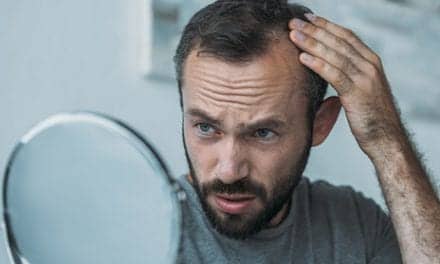 August is National Hair Loss Awareness Month, and the latest statistics from the International Society of Hair Restoration Surgery (ISHRS) suggest that hair restoration is big business.
August is National Hair Loss Awareness Month, and the latest statistics from the International Society of Hair Restoration Surgery (ISHRS) suggest that hair restoration is big business.
Hair transplants increased 76% from 2006 to 2014, the group reports. The total market size for hair-restoration surgery has increased 28% since 2012, from $1.9 billion USD in 2012 to $2.5 billion USD in 2014.
Approximately 397,048 hair-restoration procedures were performed worldwide in 2014, with 112,409 in the US alone. About 358,109 surgical patients and 697,372 nonsurgical patients were treated worldwide in 2014. In 2014, the average number of hair-restoration surgical procedures performed by survey responders was 183.
Male Versus Female Hair-Loss Patients
Men still make up the lion’s share of hair-transplant patients. On average, 84.7% of procedures were performed on men, while 15.3% were performed on women. That said, the number of women seeking help for hair loss is on the rise worldwide. The percent of surgical hair-restoration patients who were female increased from 13.7% in 2012 to 15.3% in 2014 (a 12% increase). Similarly, the percent of female nonsurgical hair-restoration patients also increased over this 2-year period—from 33.2% to 40.1% (a 21% increase).
In 2014, 89.1% of hair-transplant procedures targeted the scalp area and 10.9% of procedures targeted nonscalp areas of the body—including eyebrow (5.5%), face/moustache/beard (3.7%), and eyelash (0.6%) areas. The most common “other” target recipient areas (0.9% or less) mentioned were sideburns and scar areas, the ISHRS reports. Women were most interested in discussing eyebrow procedures (92.2%), and men were most interested in discussing facial (63.8%) or eyebrow (31.5%) procedures.
Most patients (85.4%) sought treatment due to genetic hair loss, followed by reconstructive needs (6.4%) and post-cosmetic surgery needs (5.5%).
More than two-thirds (67.7%) of ISHRS survey respondents reported performing an average of one procedure to achieve the desired hair-restoration result. The average number of procedures needed to achieve the desired hair-restoration result was 4.6, while the median was 1.0 procedure. About two in five members (42.2%) performed 1,000 to 1,999 grafts per session to achieve the desired hair-restoration result. The average number of grafts performed per session was 1,956, and the median was 2,000.
The most common healing therapies used pre- or post-hair transplantation were “Minoxidil” (69.2%), followed by “platelet-rich plasma” (PRP) (43.7%), “low-level laser therapy (home device)” (24.6%), or “low-level laser therapy (clinical unit)” (24.5%). Among the “Other specify” responses, the most common responses provided were “ATP,” “mesotherapy,” and “vitamins.”
Regarding complaints patients expressed to members following hair transplant surgery, the most common were:
- “density less than expected” (57.3%)
- “postoperative shedding” (38.8%)
- “pain after procedure” (21.0%).
Other responses included such things as “postoperative swelling,” “folliculitis,” and “pain/itchiness.”
What’s to Come?
When asked to predict the future of hair restoration, respondents cited cloning/stem cells/cell therapy/cell growth/tissue engineering (52.0%), followed by mechanization/FUE/robotic surgery/automation (22.7%) and medical treatment (chemical/hormone/gene therapy) (9.3%). Other responses included “hair preservation,” “surgeon/assistant training/ethics,” and “combining different/multiple techniques.”
About the Data
In early April 2015, all 911 physician members of the ISHRS were invited to participate in the 2015 ISHRS Practice Census by email. Of the 911 ISHRS email invitations uploaded, 899 were valid email invitations. Of the 899 physician members invited to participate, 274 responses were received by the May 22, 2015, cutoff, representing a 31% response rate. The margin of error for the sample is within +/- 4.9% at the 95% confidence level. However, the margin of error should be treated as an estimate, since pure random selection is not possible in a voluntary study with an incentive for participation.






I am the manufacturer of hair transplant instruments.
I am discovering one equipment to help very much in hair transplant surgery it will less the time as half of current time operation and also increase the efficiency in end result.
Please let me know way how I should display my epuipment once completed, in ISHRS meeting.